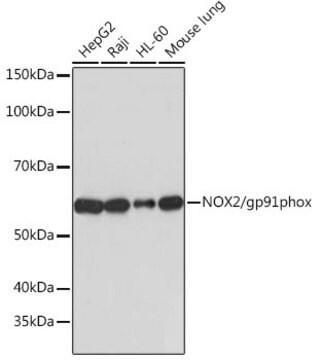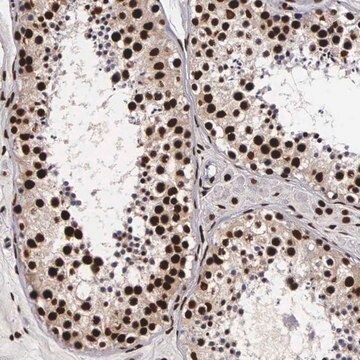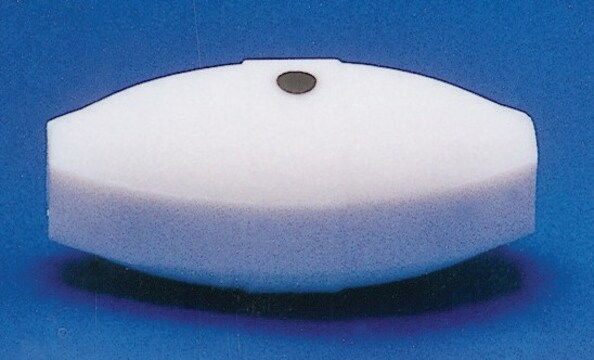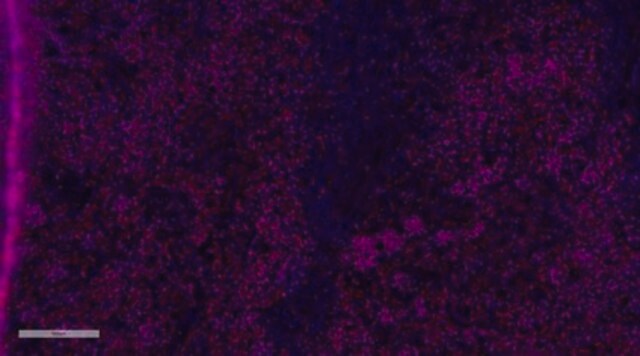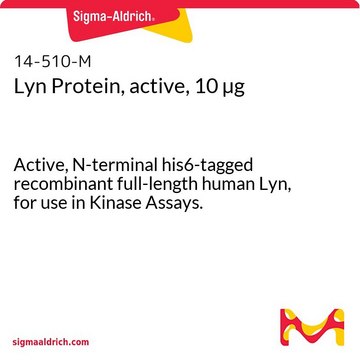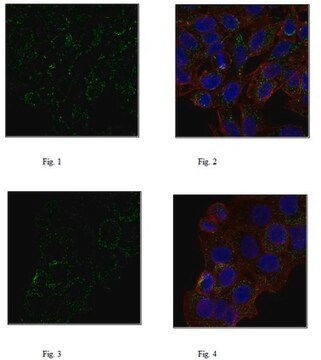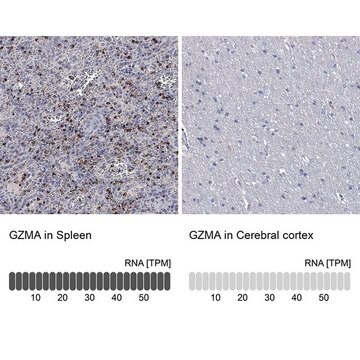MABS21
Anti-PORCN Antibody, clone 15G12.1
clone 15G12.1, from mouse
Synonim(y):
Probable protein-cysteine N-palmitoyltransferase porcupine, Protein MG61
About This Item
Polecane produkty
pochodzenie biologiczne
mouse
Poziom jakości
forma przeciwciała
purified immunoglobulin
rodzaj przeciwciała
primary antibodies
klon
15G12.1, monoclonal
reaktywność gatunkowa
rat, mouse, human
metody
immunocytochemistry: suitable
western blot: suitable
izotyp
IgMκ
numer dostępu NCBI
numer dostępu UniProt
Warunki transportu
wet ice
docelowa modyfikacja potranslacyjna
unmodified
informacje o genach
mouse ... Porcn(53627)
Opis ogólny
Immunogen
Zastosowanie
Signaling
Developmental Signaling
Jakość
Western Blot Analysis: A 1:1,000 dilution of this antibody detected PORCN in 10 µg of mouse brain tissue lysate.
Opis wartości docelowych
Calculated molecular weight of 52 kDa The actual MW should be observed at ~45-65 kDa Helical membrane protein migration on SDS-PAGE may not exactly correlate with the calculated molecular weights (PNAS, 2009, 106:1760-1765).
Postać fizyczna
Przechowywanie i stabilność
Komentarz do analizy
Mouse brain tissue lysate
Inne uwagi
Oświadczenie o zrzeczeniu się odpowiedzialności
Nie możesz znaleźć właściwego produktu?
Wypróbuj nasz Narzędzie selektora produktów.
Kod klasy składowania
10 - Combustible liquids
Klasa zagrożenia wodnego (WGK)
WGK 2
Temperatura zapłonu (°F)
Not applicable
Temperatura zapłonu (°C)
Not applicable
Certyfikaty analizy (CoA)
Poszukaj Certyfikaty analizy (CoA), wpisując numer partii/serii produktów. Numery serii i partii można znaleźć na etykiecie produktu po słowach „seria” lub „partia”.
Masz już ten produkt?
Dokumenty związane z niedawno zakupionymi produktami zostały zamieszczone w Bibliotece dokumentów.
Nasz zespół naukowców ma doświadczenie we wszystkich obszarach badań, w tym w naukach przyrodniczych, materiałoznawstwie, syntezie chemicznej, chromatografii, analityce i wielu innych dziedzinach.
Skontaktuj się z zespołem ds. pomocy technicznej
